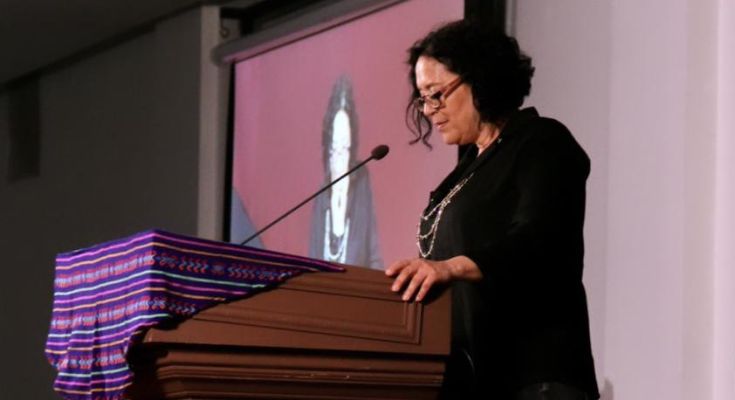By Josemaría Moreno
Armida Zepeda has been an integral part of the San Miguel Writers’ Conference, first as a volunteer 12 years ago and since 2016 as general director. She has been an essential component in turning the conference into a truly bilingual and multicultural event that has a solid social media presence and that has reached out to hundreds of students, young writers, and literary luminaries for many years now. This time she speaks of the challenges, opportunities, and accomplishments that she experienced during this year’s event.
JM: What was the biggest challenge now that you returned to an in-person modality after the pandemic?
AZ: Striving to apply the “small is beautiful” strategy, that is to say change the target audience that we had grown used to and reach a more local audience, made up of students of the various universities in San Miguel. The same happened with the teachers and writers that delivered workshops on literary creation. We were always mindful of keeping up with the literary quality and variety that the conference has always supported.
JM: On a personal note, as organizer, what events did you enjoy the most and why?
AZ: Brenda Lozano’s conference was incredible. I was amazed by her ability to take us through ancient and historical perspectives on literature, concepts of fiction and reality in writing, and the various contemporary narratives around the world. The audience really enjoyed it. I also had a lot of fun in the bilingual open-mic since we achieved an objective that we had been aiming at for a long time: to build a literary event in English and Spanish in which everyone felt welcomed, included, and recognized.
JM: Could you recount an anecdote of the most challenging problem during the event?
AZ: The so-called “Plan B”! The conference demands several months of preparation, and the most important part is defining who will be the main authors from Mexico, the United States, and Canada that will join us. Suddenly confirmations of attendance start rolling in; we get excited and congratulate ourselves, but we immediately start to worry if there will be any last-minute cancellations. There always are some.
This year it was up to the Spanish version of the event to implement a Plan B—securing a writer willing to join the conference at a short notice. It was amazing that Brenda Lozano accepted the invitation, but given the fact that there is less time to organize things with the literary agent or the writer herself, Plan B turns into something like “You must dance with the one that can’t keep a beat.” In practice this all means you have to solve many problems at quarter to 3, and the conference begins at 3.
JM: Could you elaborate on the role women, as organizers and presenters, played in this year’s conference and how the audience embraced them?
AZ: I find this question a bit odd, as if only now the presence and participation of women stood out. Women are the majority when it comes to organizing and participating, not only in the writers’ conference but also in the main cultural events and conferences in Mexico. This has been going on for years because we are more or because we are more willing to participate. But it’s also true that the presence of women as protagonists of literature, the arts, and culture is on the rise, generally, during the 21st century.
Personally, I find that inclusion and equity in genders and genres is essential, and in the Spanish version of the conference we’ve always been careful to alternate between genders when it comes to keynote speakers as well as in the proportion of women and men amongst the teaching staff, and even keeping this principle in mind when it comes to selecting from where will our creative invitees come from, so as to make sure that they don’t all come from Mexico City and there is good representation of other provinces of Mexico, especially Guanajuato.
JM: Do you think there is space in San Miguel for a Hispanophone writers’ conference?
AZ: Definitely, yes. I believe the time to come up with it is now because we have so many writers, editors, journalists, content creators, e-book agencies, and even libraries and cultural spaces in San Miguel. As a matter of fact, I think it is a good opportunity to take advantage of this interview to call for the creation of San Miguel de Allende’s Literary Board.




